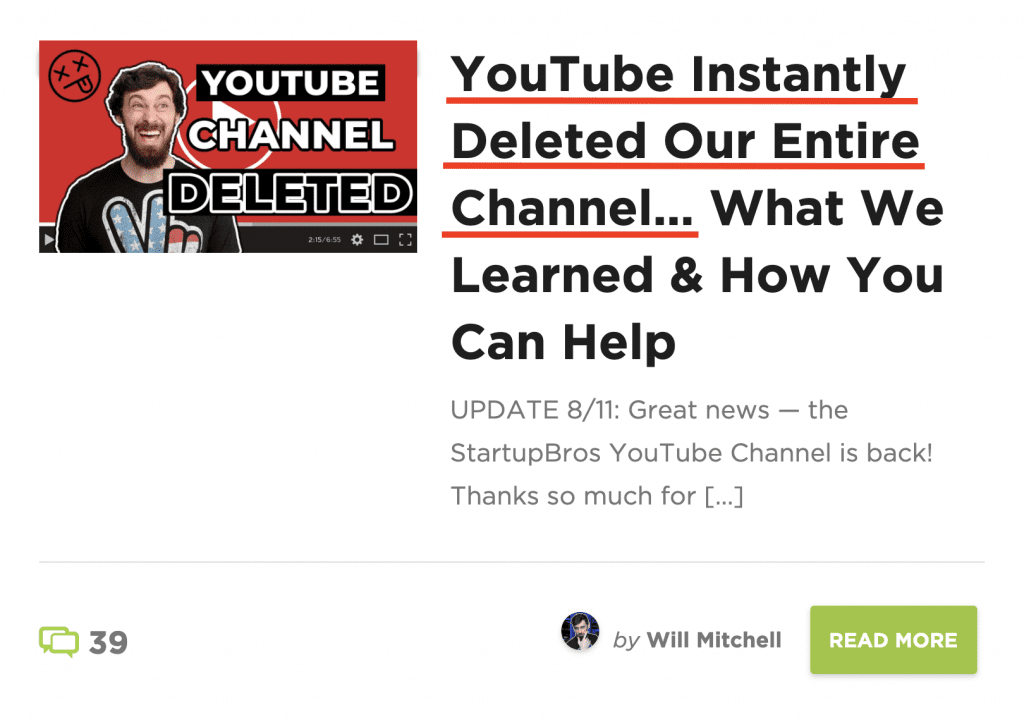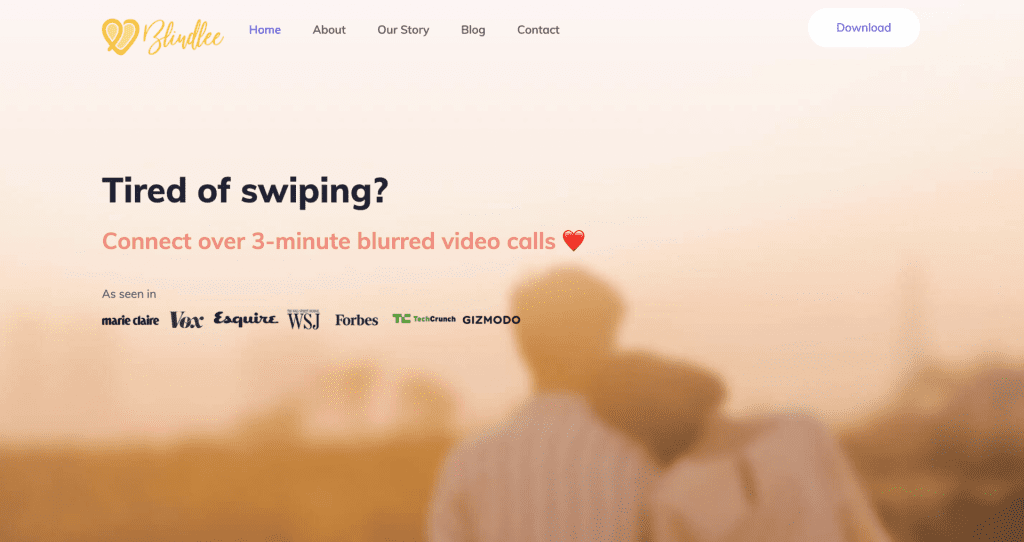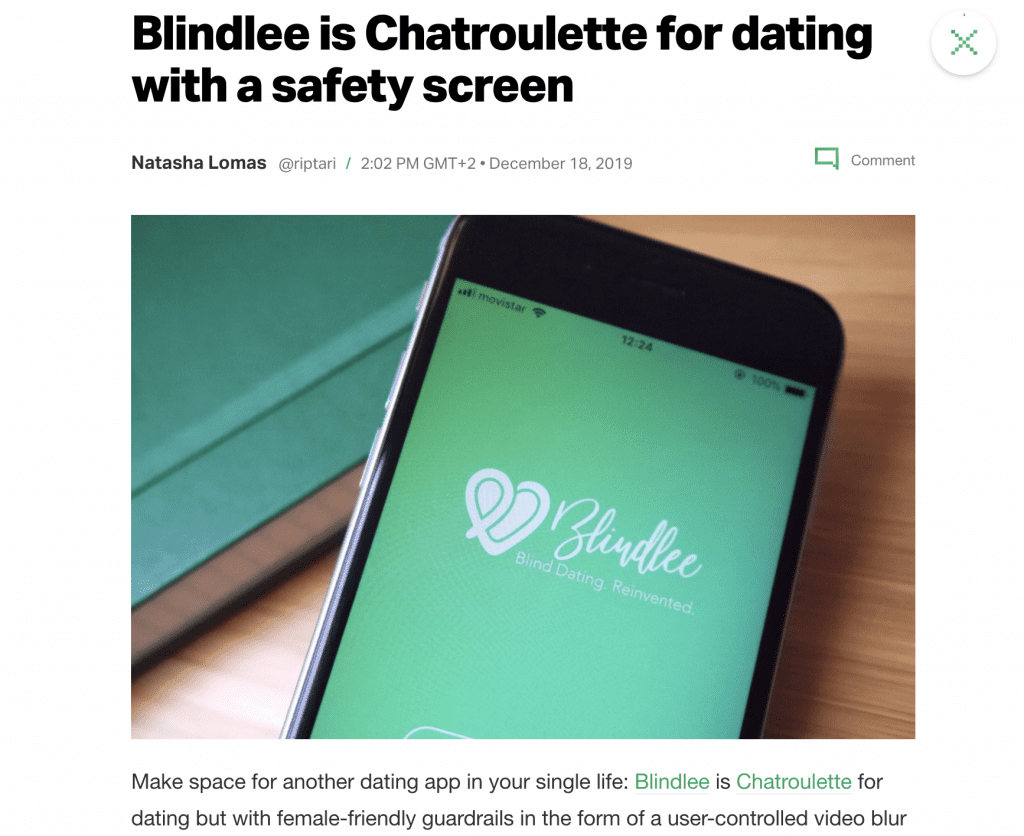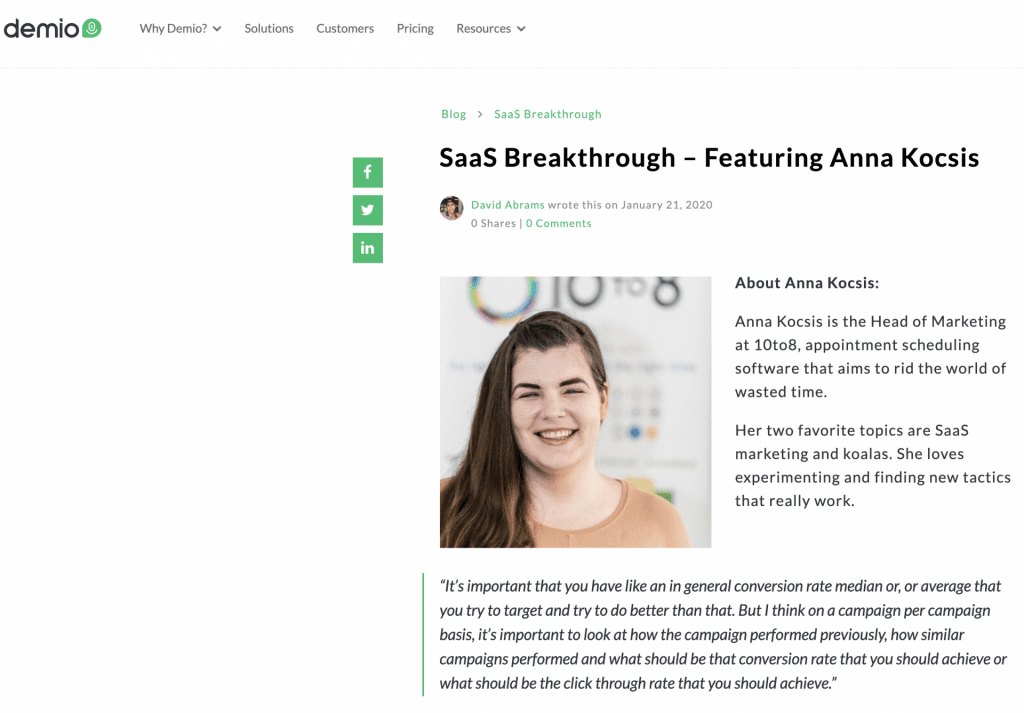Do you want to know what earned media is and how you can build an effective earned media strategy?
Here’s a concise guide to help you get started.
Inside, you’ll find…
- A simple earned media definition
- What’s the earned media value for businesses
- Four earned media examples to inspire you
- A step-by-step process to getting media coverage for your business
Lots of interesting things to cover, so let’s get started.
Link building cheat sheet
What is Earned Media?
Earned media is any kind of positive publicity about your products, services, or company that you haven’t paid for or created yourself.
Some examples of earned media are:
- Social media mentions
- Word-of-mouth and referrals
- Shares on social media, e.g. retweets
- Testimonials and reviews on sites like Yelp
- A mention that you got through a journalist pitch
- Getting backlinks through personalized outreach
- Hashtags specifically about your products or services
- Coverage from media outlets that are relevant to your business
- Online reviews of your products or services with a positive sentiment
All the above examples of earned media can be particularly valuable to the image that your brand forms online and can have a significant impact on your company’s growth.
Now that you have a basic understanding of what earned media is, let’s try to understand the difference between the following three types of media.
Earned Media vs Owned Media vs Paid Media
So far so good, but how is earned media different from owned media or even paid media?
Let’s try to break down the difference between the types, using three simple examples.
If you search for the term “Respona” on Google – we’re in incognito mode – you’ll see something like the following:

As you can see from the screenshot above, one of the first results — the one that we’ve highlighted — comes from the popular review site G2, formerly G2 Crowd.
If you scroll down the results a bit, you’ll see reviews like the following:

That’s a review that one of Respona’s customers has left for us on G2.
It’s a great example of getting “positive publicity” — not in the narrow sense of the term — that you haven’t paid for.
As you can imagine, these types of product reviews are extremely valuable when someone’s evaluating our product and considering solutions when it comes to digital PR.
The best part?
We haven’t paid for it — our customer just felt the need to spread the word about our product based on the experience they had with us.
Let’s move forward with our second example, this time for owned media.
What is owned media?
Owned media includes any kind of activity, digital marketing channel, or marketing campaign – both online and offline – that results in positive publicity for your company that you’ve created yourself.
Some examples of owned media are:
- A press release that you publish on your website
- A piece of content that you publish on your blog
- A podcast that you’ve launched and host by yourself
- Video content that you publish on your YouTube channel
- The email marketing newsletters you send to your subscribers
- Social media posts on your own social media channels, e.g. LinkedIn
Let’s see an example of earned media to make it a bit easier to digest.
If you search for “ott platforms” on Google, you’ll see that one of the first results comes from the OTT platform, Uscreen.

If you click on that result, you’ll notice that the result is an in-depth review of the top OTT platforms in the market.

It’s no wonder this content piece ranks among the top results on the search engine results page (SERP).
By having this post on its blog, Uscreen manages to reach its target audience without having to pay for it.
The best part?
People who visit the company’s website are aware of the business and may even start developing a relationship with it, for example by signing up for its email newsletter, AKA lead generation.
Owned media is probably the best type of media because having everything “living” on your own website or owned channels gives you more control over it.
Put simply, you’re not dependent on other businesses and you have full control over your content.
Let’s move on to the last media type we have for you.
Paid media is self-explanatory.
But, for those of you who don’t know what it means, here’s a simple definition.
What is paid media?
Paid media refers to any activity that promotes your products, services, or company in a way that’s positive for you, that you’ve paid for.
Some examples of paid media are:
- Your pay-per-click (PPC) campaigns, e.g. display ads, banner ads
- A paid endorsement for your company’s new product or service
- A paid partnership with an influencer, AKA influencer marketing
- A paid news story in a prominent publication for a noteworthy event
Want to see an example?
ZuluTrade is one of the leading copy trading platforms in the world.
If you search for “zulutrade” on Google, the first result you’re going to see — above the organic search results — is a paid ad, with the label “Ad”, placed by the company itself.

Obviously, ZuluTrade is likely doing that because, as a big company, it has many competitors bidding on its main branded term of “zulutrade”.
What’s important here, though, is that this is a form of paid media, or paid advertising.
We believe that it can be more effective when combined with other forms, such as owned or earned media, that we saw earlier.
Now that you have a solid understanding of what earned media is and how it’s different from other types of media, let’s get into the next section, where we’ll discuss the importance of earned media for your business.
Why is Earned Media Important for Brands?
In this section, we’re going to explain why earned media is important for brands and why it should be an integral part of a marketing strategy.
Let’s get started.
Reason #1: Cost-effective way for raising awareness
The first reason why earned media is important is that it’s a really cost-effective way to raise brand awareness.
That’s not to say that owned and paid media are expensive — after all, we don’t have any data that can prove that — rather than to say that earned media can really help you move the needle, without having to break the bank.
Reason #2: Diversification when it comes to your acquisition channels
An important reason why earned media should be a part of your marketing mix is that you can’t, and shouldn’t, rely on just one channel when it comes to your company’s growth.
It’s highly recommended that you have multiple channels working together to support your marketing efforts.
If that’s not enough, then think about the fact that, on several occasions, individuals and brands have lost their channels on properties like YouTube…

Diversification is super important when it comes to building a sustainable and long-standing business and earned media can help you achieve that.
Let’s get to reason number three.
Reason #3: It has a compounding effect over time
Earned media has a compounding effect over time.
Simply put, the more the people who talk about you, the more the people who are going to hear about you.
The same doesn’t apply when it comes to paid media, where you get results only for as long as you keep paying to be advertised.
For example, take a look at the following graph by Exploding Topics on the interest around the term “visme”.

It’s clear that more and more people are searching for Visme online.
As they do, it’s also likely that more people are going to be trying Visme and then talking about it online, after having a great experience with the software.
That creates a compounding effect over time that can help you grow faster, after you reach a certain point.
Let’s get to the last reason we have for you.
Reason #4: It has SEO value for your brand
In the updated Search Quality Evaluator Guidelines from Google for 2020, there’s a concept called EAT.
This stands for…
- Expertise
- Authoritativeness
- Trustworthiness
… and, it’s one of the ways Google uses to evaluate the quality of your website.
Part of that is getting recognized by authoritative publications in your industry as an authoritative source when it comes to the topics your website talks about.
We’re not going to get into the specifics of that, but you need to know that one of the ways to achieve that is through making meaningful connections with people who cover topics similar to yours on prominent media outlets and letting them know that you exist.
This kind of digital PR becomes increasingly important when it comes to getting higher rankings and to how Google views your website in general.
That’s also confirmed by Google’s John Mueller, who left the following comment in a relevant Twitter thread in early 2021:

Thus, besides the obvious benefits of earned media for your business, there are other, not so obvious ones such as improving your SEO.
Let’s move on to the next section, where we’ll share four inspiring examples we’ve prepared for you.
4 Earned Media Examples to Inspire You
In this section, we’re going to see some examples of earned media.
Each of them presents a different angle that’ll hopefully help you understand that there are different ways to approach the topic.
Let’s get into it.
Example #1: Blindlee
Blindlee is a dating app that allows you to “connect over 3-minute blurred video calls”.

The app operates in a category that’s somewhat cluttered and competition is pretty intense, with top players in the category almost dominating the online dating game.
However, back in 2019, Blindlee managed to get press coverage through various prominent publications such as TechCrunch…

… Forbes…

… Marie Claire…

… and many others.
From the outside, that would seem like the result of the work of a highly paid public relations agency.
However, the truth is that Blindlee made their own luck; they’ve managed to get coverage through effective PR outreach.
Getting publicity through popular publications such as the ones we just noted is a great example of using earned media to raise awareness and reach your target audience.
The best part?
The investment you need to make is significantly higher than paying for these articles or even for running PPC campaigns or any other form of paid media.
Moving on to the next example we have for you.
Example #2: 10to8
10to8 is an appointment scheduling software.

As you can imagine, appointment scheduling is another cluttered category with many players competing for their piece of share in the market.
In fact, according to G2, there are 346 tools currently available in the category.

That’s a lot of tools!
How can you stand out from the crowd and spread the word about your own online appointment scheduling service?
10to8 did it by participating in podcasts, represented by the company’s Head of Marketing, Anna Kocsis.

Of course, that’s only one of the tactics 10to8 used to raise awareness about the product and the company.
It’s a rather effective way though.
Getting featured on podcasts — without having to pay to be a guest — is a powerful and cost-effective way to spread the word about your company.
This is a great example of earned media that 10to8 achieved through highly-personalized outreach.
Moving on to the next one.
Example #3: Visme
In April 2021, our sister company Visme launched its desktop app on ProductHunt.

The product became the #1 product of the day and got raving reviews, as you can see below.

What’s exciting about this product launch is that all the feedback and wide acceptance that we managed to get, both on ProductHunt and on other social networks, was exclusively through earned media.
We didn’t dedicate any promotional budget to the campaign, nor did we have any other plans for attracting potential customers.
The reviews that you see above created a compounding effect that led many users to download and start using the desktop app after the launch.
What’s important to note is that you can’t expect to have this level of support and enthusiasm if your product isn’t exceptional.
Simply put, if Visme was a different product, the positive feedback that we got wouldn’t have been the same.
This means that earned media and the other types of media that we discussed earlier can only be effective if you have a substantial product or service to support it with.
Let’s move on to the last example we have for you.
Example #4: Whereby
In May 2021, Ryan Bonnici, the CMO at Whereby, shared the following post on social media:

In a world of sameness and repetitiveness, this amazing campaign makes a difference and helps Whereby to stand out from the crowd.
As you can see in the screenshot above, the post got 466 likes and 103 comments.
Needless to say that, with this kind of engagement, thousands of people must have seen this post and were exposed to the way Whereby does marketing as well as to Whereby as a brand – for those who didn’t already know about it.
Whereby may have paid for the initial campaign, such as designing, printing, and installing the ads on the streets, but the exposure that the brand got from this post was absolutely free.
This is a great example of creativity along with boldness creating great earned media coverage and attention.
Obviously, not every brand can do something like this, but as you can see from the results above, people appreciate outside of the box thinking and execution.
Well done, Whereby!
Now, let’s share with you a simple step-by-step process for getting media coverage without having to pay for it.
4-Step Process for Getting Media Coverage for Your Brand
You’ve now seen how other companies have managed to get media coverage and generate buzz for their businesses.
What we’re going to do now is to take you through the process of getting media coverage for your own brand.
To do so, we’re going to use Respona.
More specifically, we’ve already taken screenshots using the tool to demonstrate the process in detail.
Before we get any further, we need to say that having a hypothetical scenario in place is essential in order for us to better illustrate the process and also show you the possibilities that exist in terms of the use cases.
To be more precise, our scenario is that we’re Respona – which we are! – and we’re about to launch in a few months.
For that reason, we want to reach out to podcasts that cover SaaS launches to promote our launch.
Let’s jump right into our first step.
Step #1: Find earned media prospects
The first thing we do is as simple as creating a new campaign with Respona.

We then need to give our campaign a name that:
- Successfully describes our campaign
- Is easy to remember.
The reason for this is that we want to be able to efficiently keep track of our campaigns in case we run multiple campaigns at the same time.
At this point, we also need to set a campaign priority – which is very useful when running more than one campaign.

To get started with our search query, we need to select a source in terms of the type of media we want to get results from.

Given that we can generally test out different sources with Respona’s built-in search engine, we first go for the News source.
That’s because we want to find news articles that talk about SaaS launches.

Moving forward, after having done our first search, we can find all journalists writing about the latest software launches.
We now need to go through the search results and start clicking on the ones we’re most interested in.
At this point we’ve already selected five opportunities.

As we’ve mentioned a little further up, Respona allows us to perform more than one search query and thus, choose opportunities from various search sources.
This time we’re going for the Podcasts source.

Given that we’re looking for episodes that cover SaaS launches in particular, and not podcast series in general, we’re going to also select the Episodes tab.
Additionally, we’re going to add a filter that’ll allow us to narrow down our query and get the most relevant results.

Overall, we’d say that we’re going for a very targeted search here.

We’ve now selected all our opportunities and are ready to get to our next step.
Step #2: Craft your outreach email
The second big step we’re going to take here is to start crafting our email pitch.
Respona offers a wide range of email templates you can personalize and use for your own outreach needs and it also allows you to craft your pitch in the tool and get a grade for it – more on that a little further down.
This time, we’re going to create a new one.

What you see below is our email sequence.
Having it all in one place is very useful, especially for campaigns that might include various follow-ups.
As you can see, this page shows you your initial email including its subject line and part of the email opening line.

As we said earlier, Respona auto-grades our email content to help us make sure that we haven’t crossed any limits in terms of the:
- Subject length
- Word count
- Spam word count

When that’s done, we’re getting to the next step of the process.

Step #3: Find contact information for your earned media prospects
Finding contact information for our earned media prospects is our third big step.
What we basically need to do now is to do our automation setup and give Respona additional information in terms of the people we want to reach out to.
More specifically, we’re asking Respona to assign opportunities to the authors of the blog posts, regardless of whether they work for the company that’s associated with the URL.
Put another way, we want to specifically reach out to people who’ve written about SaaS product launches in the past, no matter where they might be working now.
Moreover, we are also asking the tool to assign opportunities to up to one person – for the companies associated with the article domain – only when no author is assigned.

Moreover, we’re also going to select some of the advanced settings, allowing us to:
- Not assign a catch-all email if no valid email address is found for the person
- Assign a company generic email email if no valid business email address is found for the person linked to our opportunity
Next, we’re getting to review and run our automation.

What we see on the screenshot below are the results of our automation.
More specifically, Respona was able to successfully assign ten out of thirteen opportunities we’d initially chosen.

Don’t worry about those three unassigned opportunities; they’re not lost.
There are many things we can do to get them assigned…

… including adding a contact manually.

The way this works is that you’re adding the full name of your prospect and a domain – probably the opportunity domain – and clicking on Save.

We’ll keep on doing that until there are no unassigned opportunities in our campaign.
Moving forward, we simply need to personalize our email pitch and launch our campaign.
Here we go.
Step #4: Personalize and launch your campaign
Personalization is essential when it comes to sending out effective email pitches that’ll resonate with your prospects and make them want to get back to you.
There are various things you can do to personalize your email content, including adding excerpts from articles written by the prospect or mentioning something you know about them that’ll clearly show them that you actually care about their work.
A very smart thing to do is to take advantage of the fact that Respona will give you links to their social media accounts and connect with them before you even get to launch your campaign.

Once you’re done adding your personal touch to your email content, and also making sure to connect with your prospects prior to contacting them for your SaaS launch campaign, you can click on the Launch Campaign button.

Feels nice, doesn’t it?
Let’s wrap this up and close with some final thoughts.
Link building cheat sheet
Now Over to You
The biggest takeaways from this post are the following:
- Anyone can get coverage from relevant media outlets without having to break the bank
- Earning free media coverage and raising brand awareness is kind of an art that requires creative thinking and stellar execution
Also, you have to keep in mind that relying on just one channel, e.g. content marketing or search engine optimization, for your company’s growth isn’t sustainable or smart.
You have to diversify the way you reach out to and acquire new customers.
Getting coverage from different types of media may not be easy, but it can sure help in that direction.
If you’re looking for an all-in-one solution for reaching out to influencers, bloggers, podcasters, or even to traditional media, then look no further.
A simple demonstration of Respona’s capabilities will convince you that we’re on top of our game when it comes to digital PR.
Just get in touch and we’ll take care of the rest.







